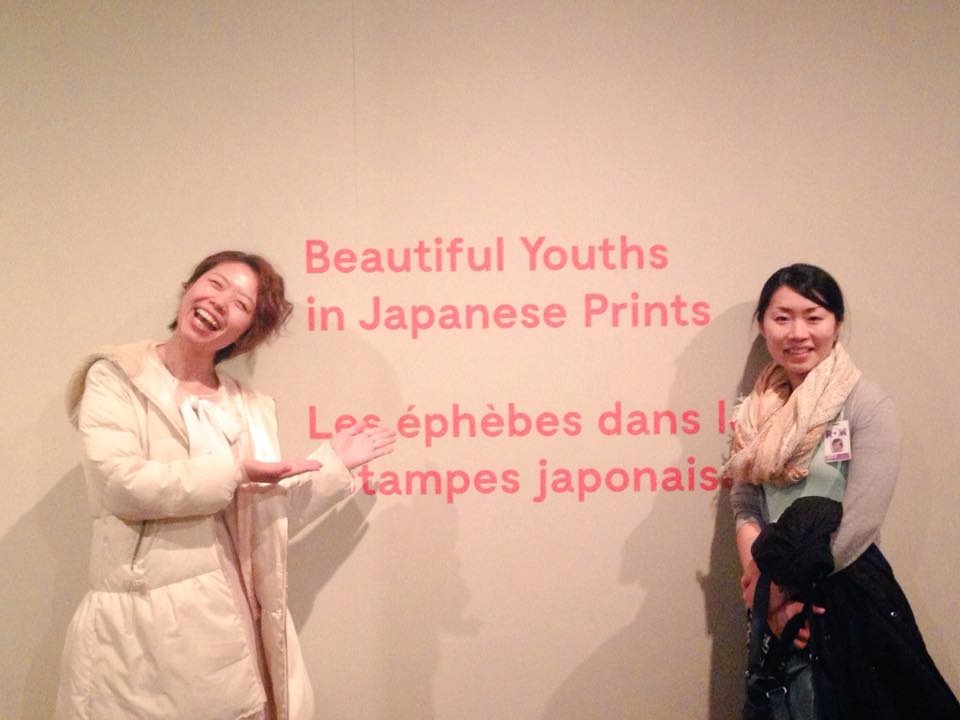What Is “Obscene”? And Who Decides? — Thought and Proposition by the Curator of "A Third Gender"
Published
Categories
Author
Blog Post
What Is “Obscene”? And Who Decides? — Thought and Proposition by the Curator of A Third Gender
By Asato Ikeda

The Toronto Star’s art critic Murray Whyte published a generous review of the show A Third Gender, calling it “a quiet landmark of an undeniable social shift.” (https://www.thestar.com/entertainment/2016/05/16/at-the-rom-an-ancient-third-gender-informs-the-present.html). He writes, “As a little reminder of Edo Japan’s frankness regarding sexuality, the show includes a small section of Shunga prints, highly explicit entanglements with nothing left to the imagination, which is a giant leap for the ROM all on its own” (emphasis mine). Indeed, convincing the ROM to include erotic prints that portray sexual intercourse and exaggerated genitals was neither an easy task nor a decision lightly made. The show is included in the cost of general admission, which means that there are no staffs to check tickets for a special exhibition and therefore no staff to give verbal warnings to visitors about the subject matter. However, the entrance wall does have a written disclaimer about nudity and the sexually explicit nature of the exhibit, and the show is specifically targeted at adult audiences.
The decision to display erotic prints (shunga in Japanese) was related to their importance and centrality in the visual culture of the Edo period. As the exhibition explores such topics as gender and sexuality, it is necessary to explain that Edo-era society was characterized by a distinct set of values regarding sex and sexual images. Prostitutes and pleasure quarters are the recurring subjects of Edo-period prints, and many designers who are considered “masters” today—such as Harunobu, Utamaro, and Hokusai—produced shunga. These erotic prints were executed for aesthetic pleasure and humor as well: sexual stimulation, in other words, was not their sole purpose. Shunga therefore transcends the decidedly Western binary of “art” versus “pornography.” Indeed, recent shunga exhibits at the British Museum (2013), the Honolulu Museum of Art (2013), and Eisei Bunko in Tokyo (2015), attest to the value of those erotic prints from art historical as well as anthropological points of view. If museums in London, Honolulu, and Tokyo can display shunga, why can’t we do it in Toronto?
One could, however, pose the following questions: are these images appropriate for young audiences, or are they “obscene”? Should children be allowed in the exhibition space? Should minors require parental consent? Or should only those who are eighteen and over be permitted to view the show and, by extension, understand the full cultural context of Edo-period Japan?
Fast forward. On May 16, I had an unexpected guest visiting A Third Gender. Her real name is Megumi Igarashi, but she is also known as Rokudenashiko, which can be translated as “good-for-nothing girl.” She was arrested twice in Japan in 2014 for obscenity for making a kayak based on a 3D model of her own vagina. The case has made headlines in major media outlets both inside and outside Japan (see, for example, http://www.theguardian.com/world/2014/dec/03/japanese-vagina-kayak-artist-arrested-again-obscenity). The court argued that the realistically shaped vagina could sexually arouse those who see it. She was found guilty, and she had to pay fines. The North American media was consistent in their portrayal of the incident: it is hypocritical and misogynistic that a female artist should be arrested for making a vagina-shaped boat, when Japan has a large pornography industry predominantly targeted at men and there is an annual “penis festival” in Japan (http://nytlive.nytimes.com/womenintheworld/2015/04/15/japan-hosts-an-annual-penis-festival-so-why-is-a-japanese-woman-on-trial-for-her-vagina-art/). What brought Ms. Igarashi to Toronto was the Toronto Comic Arts Festival, which had invited her to sign her vagina-themed book (http://www.cbc.ca/news/canada/toronto/japanese-artist-debuts-vagina-themed-graphic-novel-in-toronto-1.3583494). Despite not knowing how the legal charges might impact her ability to travel or enter a foreign country, she decided to come. Ms. Igarashi was surprised and pleased by how welcomed she was in Toronto, as she is a frequent target of vicious public criticism and cyber attacks in Japan.
Would Torontonians find her works “obscene” and consider her a serious public threat? Would they worry that her works would sexually arouse those who view them? Would she be arrested in Canada if she was to make the vagina shaped kayak boat here? Most likely, the answer to all these questions is no.
This brings me to my main point: what’s considered obscene differs considerably from one culture to another, and from one historical time to another. What I decided to do as the curator of A Third Gender is to show the Edo-period visual culture in full, without hiding some of its products that might or might not offend some contemporary Canadian audiences. Would all visitors to A Third Gender be happy with the inclusion of shunga? Probably not. Would all of them be disgusted by its “obscenity”? Probably not that either. The possible dissonance of opinions is always a given in a multicultural society like Toronto. I would feel as though I have done great work if this exhibition can open a discussion about questions like: what is “obscene”? And, who decides? Our answers will vastly vary—and that’s okay. Considering questions such as these, and discussing them, I believe, is what makes our art-viewing and museum-visiting much more socially meaningful and intellectually engaging.
And, personally, I would be happy to know what you think. (hashtag #3rdGender)


